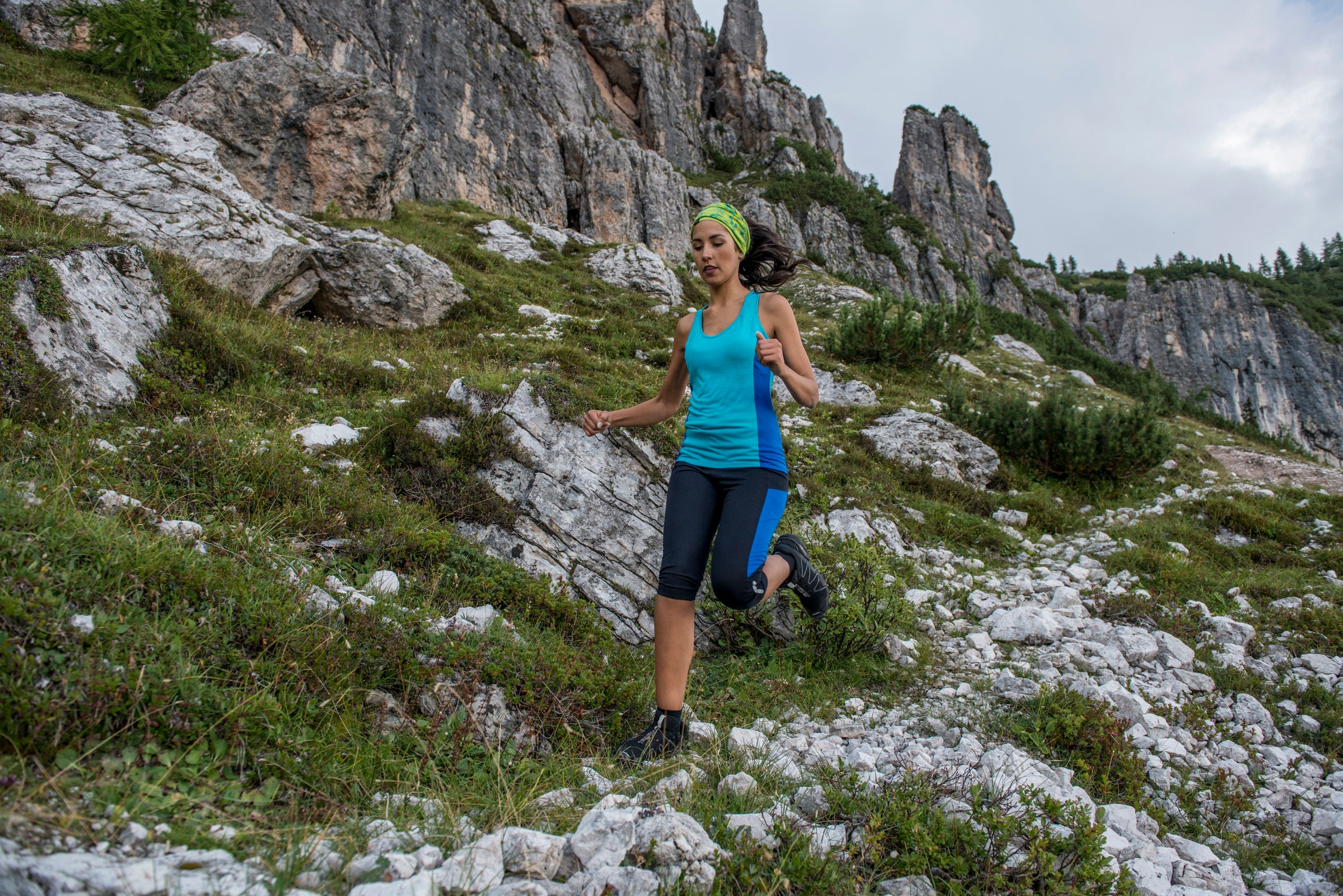How To Run Steep Downhills

Learning how to run downhill is like learning how to dance. When you start, you are like a pimpled seventh grader hoping not to make a fool out of yourself. Over time, though, you can learn to bust a move with the best of them.
Just like dancing, downhill running requires you to commit, relax and get your mind out of the way. Any trail runner can learn what to do, if you let yourself.
Downhills are not that complicated, but they take practice. Good downhill running starts with three general rules, which you can use to gain comfort on any terrain.
RELATED: Dial In Your Trail Running Technique
1. Take short strides
On downhills, runners tend to use gravity and open up their stride, bounding over the trail with heavy footfalls. That is a bad approach for two reasons.
First, a longer stride gives you fewer opportunities to course-correct as you go. Each footfall that lands in front of your body is a risk, because a larger percentage of your weight is supported by that footfall. Step wrong with a loping stride, and you’ll probably taste dirt before you have a chance to say, “Oh fudge.”
With short strides, each step involves less impact force and thus gives you a chance to adjust on the fly. Step badly, and you might already be on to the next step. Sometimes, the best downhillers are really just the best controlled stumblers, able to misstep and recover constantly without any issues.
Second, long downhill strides increase eccentric muscle contractions, which can lead to soreness later. Eccentric contractions are the controlled lengthening of muscle under tension. Imagine your leg extended in front of you. As you land, your knee will bend, causing eccentric contractions and associated muscle damage.
Shorter strides will still cause some eccentric contractions, but since the muscles aren’t under as much load with each stride, the next-day soreness will be less pronounced.
RELATED: Strength Train For Better Downhill Running
2. Practice appropriate posture
Essentially, you want to keep your feet under your center of gravity, rather than leaning too far forward or backward. Lean forward excessively and your momentum will increase, limiting your ability to adjust to the terrain as it comes. Lean back, and your leg will land in front of your mass, causing eccentric muscle contractions and problems from over-striding.
Instead, try to keep your shoulders, hips and ankles aligned at impact, using the hips and knees as key indicators of proper form. Run tall through the hips, and avoid “sitting down” in your stride. Because of forward momentum, maintaining upright posture through the hips may actually feel like leaning forward a few degrees.
At the same time, focus on a relaxed knee drive, lifting your feet from the knee, rather than kicking back. That will help you avoid kicking rocks and will contribute to a quick, soft stride.
RELATED: Training To Be A Strong Downhill Runner
3. Relax and let it flow
People sometimes describe good downhill running as making love to the trail. Others treat downhill running like a job interview.
The informal downhiller jumps over rocks, lets his/her arms go above his/her head when that seems to help and doesn’t worry about a misstep or bad line. The formal downhiller stiffly views each rock as an obstacle and each steep section as a competitor.
If you relax and flow, you’ll run downhills faster because you are not putting on the brakes unnecessarily, but instead letting gravity do the work. This practice can be learned over time, like anything in life.
If you consider yourself a bad downhill runner, let that thought slip away. Anyone can become an expert downhill runner if you work at it and avoid self-judgment. After all, gravity is a constant for all of us. Make it a constant companion, rather than a constant enemy.
David Roche partners with runners of all abilities through his coaching service, Some Work, All Play. With Megan Roche, M.D., he hosts the Some Work, All Play podcast on running (and other things), and they wrote a book called The Happy Runner.